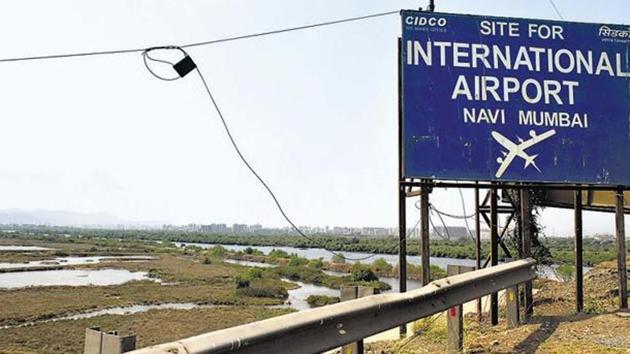Mumbai’s new airport comes at a cost: 72 Wankhede stadiums of mangroves
The Navi Mumbai airport, first proposed 20 years ago and approved in 2007, is to be built on 1,160 hectares, of which 250 hectares is forest land
The city’s new airport, planned in Navi Mumbai, will take away 106 hectares or 72 Wankhede stadiums of mangroves in Ulwe, Raigad district.

While 100 hectares make one square km, the area of Wankhede stadium is 1.48 hectares.
Mangroves grow in intertidal zones and play a crucial role in stabilising coastlines.
The City and Industrial Development Corporation (Cidco) and state mangrove cell conducted a survey to check how much mangrove forest land will be required for the project.
“Initially, the loss of mangrove cover for the project was estimated to be more than 110 hectares. A detailed survey showed more than four hectares that could be saved,” said Satish Gavai, additional chief secretary, state environment department. “There is a restoration plan in place. Three mangrove saplings will be planted in place of every axed tree. However, when it comes to hacking of trees, the contractor will have to submit a detailed plan to the mangrove cell and then the Bombay high court. We can start the hacking once we get both the approvals.”
About mangroves
Mangroves are salt-tolerant plants, a common natural feature along the Mumbai coast
Apart from playing a role in stabilising coastlines, mangrove trees act as carbon sinks, capturing CO2 from the atmosphere and storing them in the vegetation. This process is called carbon sequestration, and helps control global warming by reducing CO2 levels in the atmosphere
Mangrove ecosystem establishes and grows at the interface of soil and water bodies like sea, creeks, estuaries, bays and lagoons. They are commonly found in inter-tidal areas – area between the high tide and the low tide.
Mangrove ecosystem is believed to have evolved around 114 million years ago in tropical and subtropical regions. It requires a minimum of 24 degrees Celsius temperature for growth
In Maharashtra, mangroves cover almost 222 sq km of coastline covering 53 creeks and seashore
The largest mangrove forest in the world is at Sundarbans, West Bengal
Source: Godrej Marine Ecology Centre
The Navi Mumbai airport, first proposed 20 years ago and approved in 2007, is to be built on 1,160 hectares, of which 250 hectares is forest land.
The union environment ministry granted environment clearance for the project in November 2010, but with 32 conditions that included restoration of lost mangrove cover through fresh plantations. Also, the Centre directed the rehabilitation of 3,000 families from 12 villages that will have to be vacated.
The mangrove cell officials said 160 hectares of fresh plantations have been done on the 615 hectares set aside at Kamothe. “We will plant mangrove saplings across another 50 hectares by October, taking the total to 210 hectares,” said N Vasudevan, additional principal chief conservator of forest, state mangrove cell.
Other officers from the mangrove cell said the survival rate of fresh saplings at Kamothe is 80%. “The mangrove cover is well-protected. Channels have been made so tidal water can reach them. We have planted grey mangrove (Avicennia marina), Indian mangrove (Avicennia officinalis), mangrove apple (Sonneratia Apetala) and the Asiatic mangrove (Rhizophora mucronata) at the site,” said Makarand Ghodke, assistant conservator of forest, Mumbai Mangrove Conservation Unit.
Read more: Maharashtra sets aside 250 hectares of forest land for Navi Mumbai airport
Stay updated with all the Breaking News and Latest News from Mumbai. Click here for comprehensive coverage of top Cities including Bengaluru, Delhi, Hyderabad, and more across India along with Stay informed on the latest happenings in World News.
Stay updated with all the Breaking News and Latest News from Mumbai. Click here for comprehensive coverage of top Cities including Bengaluru, Delhi, Hyderabad, and more across India along with Stay informed on the latest happenings in World News.





